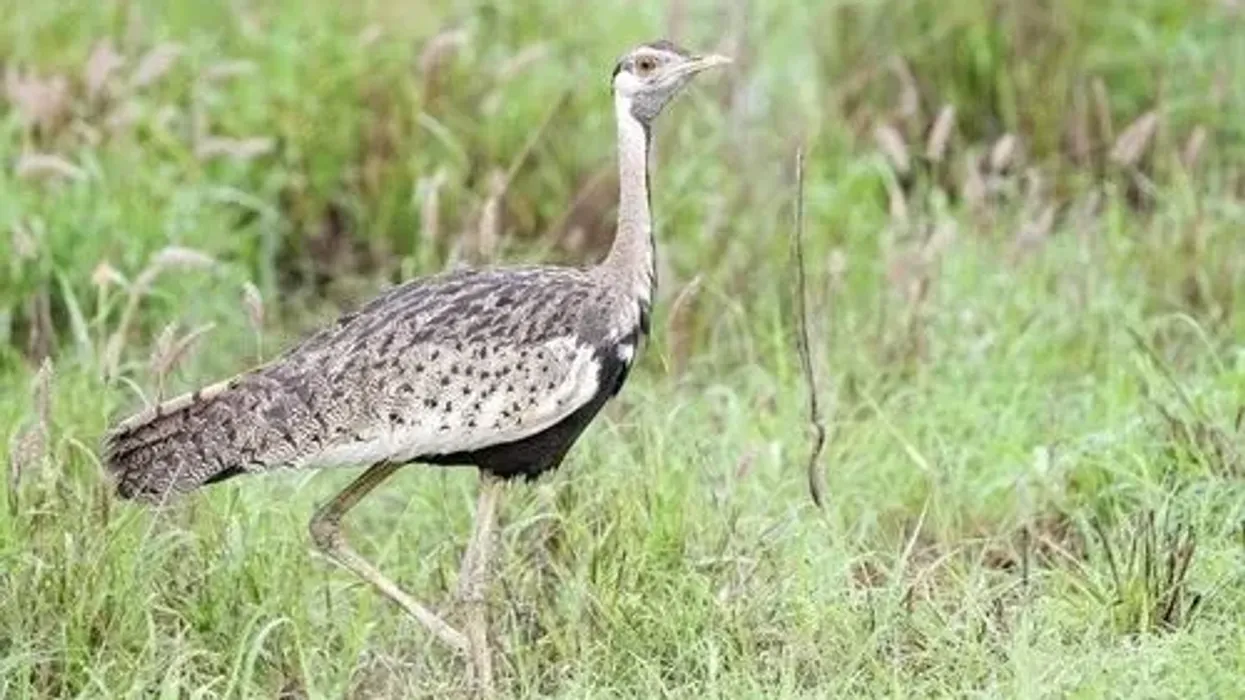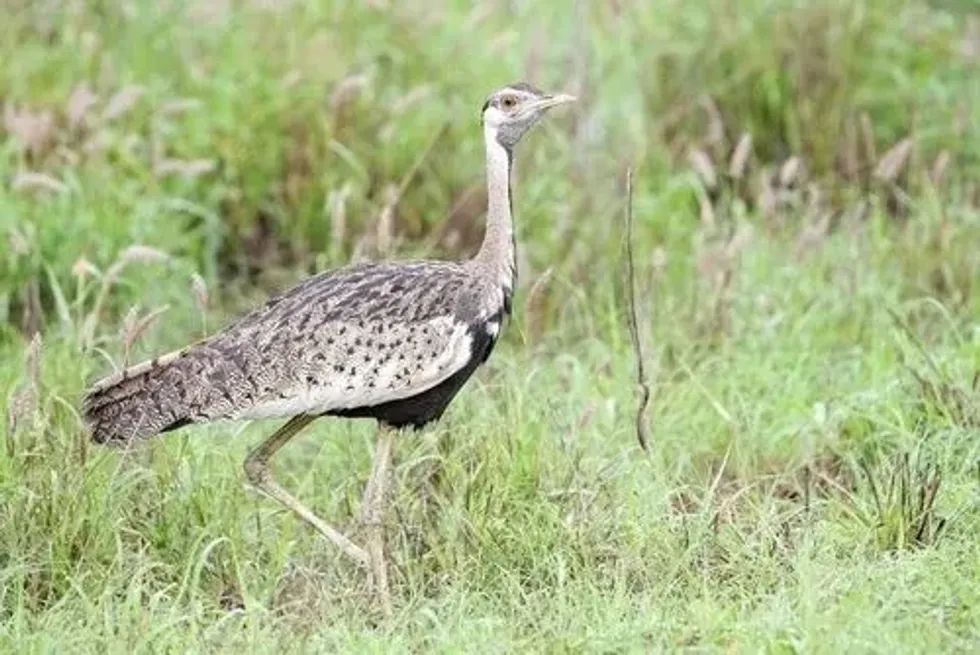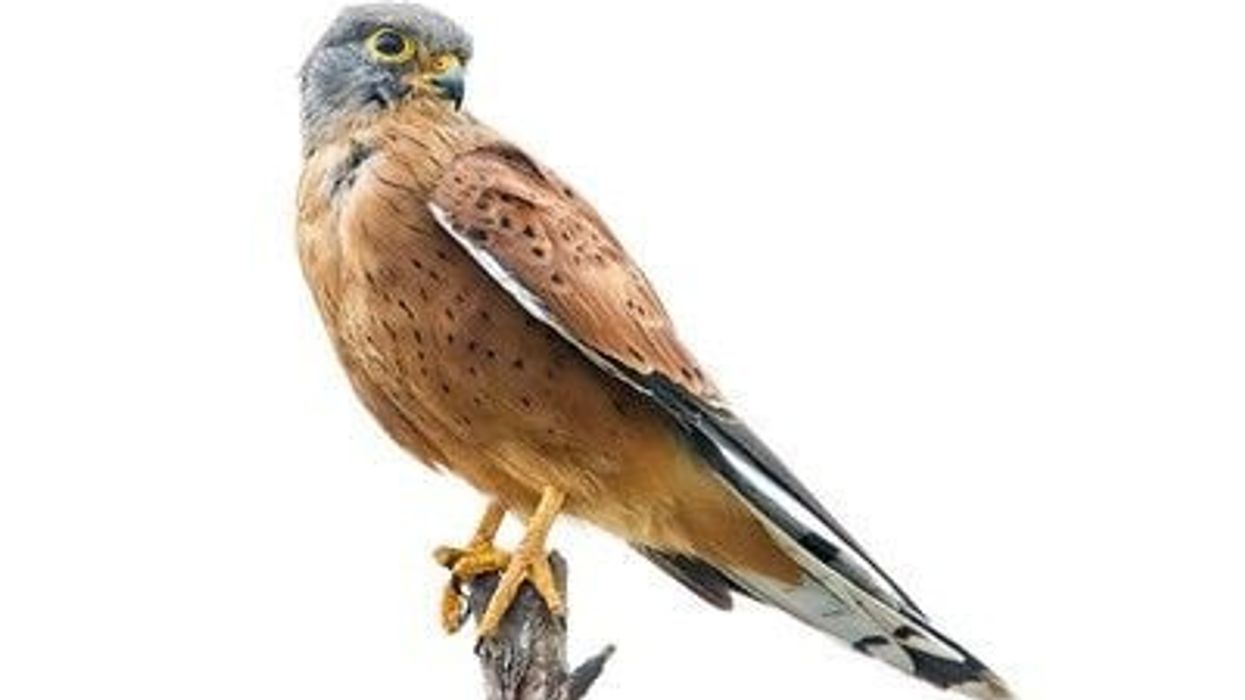The black-bellied bustard (Lissotis melanogaster) is a Southern African bird that is a member of the Otididae family, which also includes bustards. The black-bellied bustard may be found in Africa's savannas from Senegal and Gambia to Ethiopia, and south to Botswana and the east coast of South Africa.
Its brown plumage has a variety of colors and patterns that help it blend in with its semi-desert surroundings. The black-bellied bustard, which is around two feet in length, is a ground-dwelling bird.
This bird, like many others whose names have been altered to standardize worldwide bird lists, had a prior identity.
It was previously known as the black-bellied korhaan. The male makes a wheezy sound while extending its neck, then swiftly retracts and pops like a cork.
The airborne performance consists of a leisurely flight with wide wings, followed by a parachute-like drop with its belly exposed. Visit Africa between October and February to watch this incredible mating display!
If you were engrossed reading about the amazing bustard, why not read our interesting animal facts about the green heron and the pileated woodpecker.
Black-Bellied Bustard Interesting Facts
What type of animal is a black-bellied bustard?
Bustards are large terrestrial game birds that are members of the Otididae family and the Animalia kingdom.
What class of animal does a black-bellied bustard belong to?
This beautiful bustard bird is a member of the Aves class and the Otididae family.
How many black-bellied bustards are there in the world?
The species' global population number has not been measured, although it is said to be common to frequent. The population is thought to be declining as a result of continuous habitat deterioration.
Where does a black-bellied bustard live?
The black-bellied bustard range map is widespread across the Sub-Saharan Africa range, from KwaZulu Natal in the south through Central, East, and West Africa.
What is a black-bellied bustard's habitat?
The black-bellied bustard habitat is found in Sub-Saharan Africa in savanna, farmed fields, and tall open grassland. This species can also be found in South Africa, including Zimbabwe, Botswana, and parts of Tanzania and Nigeria. It prefers more rainfall than Hartlaub's bustard and appears only after severe rain in many locations.
Who do black-bellied bustards live with?
Bustards are friendly birds after mating season, but in open spaces, they are wary and difficult to approach. A bustard can live alone or with several people. A small bustard dwells in groups of many birds, whereas the bustard that lives in semi-desert settings prefers to remain alone.
How long does a black-bellied bustard live?
The typical lifetime of all types of bustard species is 10-15 years.
How do they reproduce?
The male begins with a leisurely show flight, soaring to the air with slow wing beats to look bigger than life, then gliding down to the ground with spread wings to reveal his black belly. The eggs are deposited straight on the ground, frequently among tall grass tufts.
The black-bellied bustard eggs are well hidden by light olive green blotches striped with brown, olive, and grey. The egg-laying season lasts from roughly September to March.
The female lays one to two eggs, which are exclusively incubated by the female. The mother looks after the chicks and drives away intruders such as warthogs if they approach too close to her young.
What is their conservation status?
This species is listed under Least Concern as per the IUCN red list.
Black-Bellied Bustard Fun Facts
What do black-bellied bustards look like?
The male black-bellied bustard (Lissotis melanogaster) is differentiated from another male bustard by its completely black underparts, grey chin, and white cheeks bordered by a thin black line extending to the posterior eye. The beak and legs have a pale golden color.
The upper parts of the male feature black and brown markings on a tawny buff background.
The head is heavily striped in black, white, and buff. The buffy brown neck is long and slender for a bustard, with a thin black line down the front connecting to the black breast.
The tail is brown and buff, with four or five slender dark brown stripes running through it.
The top surface of the wings is white, with a brown triangle at the base in the description. When the bird stands, the white of the black-bellied bustard feathers contrasts with the black underparts.
The female black-bellied bustard (Lissotis melanogaster) is a simple buff with deeper brown mottling on the back and thin wavy bands on the neck and breast.
With a dark grey head and buff markings on the wings, the juvenile species is duller and darker. The female's vermiculations, the male's white chin, and lores, and the neck and rump patterns of both sexes distinguish this species from its near relative, Hartlaub's bustard.

How cute are they?
They are gorgeous birds with timid personalities. Their features, like their large wingspan and patterned plumage, are visually attractive.
How do they communicate?
A male communicates by roaring while flaunting his magnificent feathers, extending his tail, and leaping. The black-bellied bustard call sounds like a frog, followed by a 'kw-ick'. In courting display, the male retracts his head to his back, delivering a brief rising wheezy whistle, 'zhweeeee'.
How big is a black-bellied bustard?
They are medium-large birds in description, having powerful long legs that are suitable for walking and sprinting.
How fast can a black-bellied bustard fly?
They are known as the world's heaviest flying birds, despite the fact that the black-bellied bustard (Lissotis melanogaster) prefers to walk or run over flight. Their migratory speed is predicted to be 29 mph (46.6 kph). Their highest speed is 49 mph (78.8 kph).
How much does a black-bellied bustard weigh?
Females of the species are significantly smaller and lighter than males. They weigh about 3 lb (1.3 kg) on average, compared to 4-6 lb (1.8-2.7 kg) for males.
What are the male and female names of the species?
There is no sex-specific name for the black-bellied bustard (Lissotis melanogaster). They're simply referred to as black-bellied bustard female and black-bellied bustard male.
What would you call a baby black-bellied bustard?
A baby bustard bird is known as a hatchling, chick, or fledgling.
What do they eat?
Bustard is an omnivore, which means they consume both plants and animals. The bulk of most species' meals consist of flowers, leaves, roots, bulbs, fruits, seeds, and branches. They eat both grasshoppers and beetles. During the mating season, insects constitute an essential element of the diet.
Larger animals, such as rodents and reptiles, are eaten on occasion. Crops are consumed on a regular basis by species that dwell in agricultural areas. Wolves and falcons have been found to be their primary predators.
Are they poisonous?
It is a shy bird that changes its behavior when there are a lot of humans around. There hasn't been any notable interaction between a bustard and a human.
Would they make a good pet?
No, they're wild birds who feel scared around humans. They are extremely shy and thrive in the wild. Despite this, they are being reared in captivity to boost their number.
Did you know...
This bird is one of several that Arab falconers use to teach their hawks. The black-bellied bustard is bred specifically for this purpose.
The black-bellied bustard (Lissotis melanogaster) is known as the 'Langbeenkorhaan' in Afrikaans, which translates to 'long-legged' bustard.
What's the difference between a black-bellied bustard and a red-breasted korhaan?
The red-crested bustard's all-black underwings distinguish it in flight from the black-bellied bustard (Lissotis melanogaster), which has white windows in the underwing. Both the black-bellied bustard and the red-breasted korhann comparison can be done as they are extremely distinct from one another.
Red-crested korhaan is distinguished from females by black-and-white chevrons on the upper portions, duller legs, and no white in the primaries. Male African black-bellied bustard has a longer neck and legs, a black line along the foreneck, mottled upperparts, paler legs, and more white in the wing.
Are black-bellied bustards endangered?
No, they are not endangered but their population is declining. For now, its conservation sites are identified over the entire range and it occurs in at least one protected area.
Here at Kidadl, we have carefully created lots of interesting family-friendly animal facts for everyone to discover! For more relatable content, check out these radjah shelduck facts and yellow warbler facts for kids.
You can even occupy yourself at home by coloring in one of our free printable mallard duck coloring pages.
Second image by TonyCastro.









